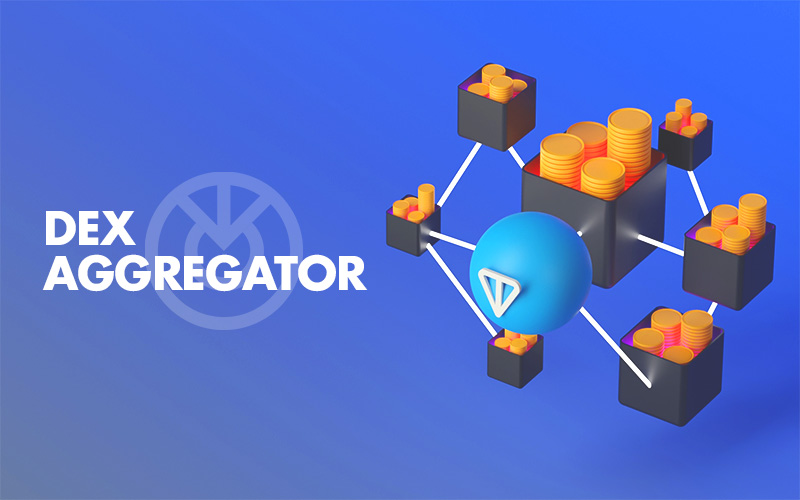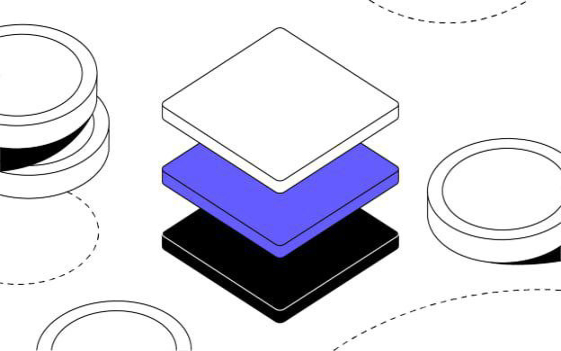Blockchain bridges enable interoperability, meaning that digital assets and data hosted on one blockchain can interact with another. Interoperability is the cornerstone of the internet: Machines worldwide use the same set of open protocols to talk to each other. In the blockchain space, where there are many distinct protocols, blockchain bridges are essential to enabling a similar ease of exchanging data and value.
Globally there are hundreds of blockchains out there in the world, e.g., Bitcoin, Ethereum, TON (The Open Network), Polygon, etc. These systems operate with diverse consensus protocols, programming languages, and system regulations. Here is where bridges will come for assistance. A blockchain bridge is a protocol connecting two economically and technologically separate blockchains to enable interactions between them. It functions like a physical bridge linking a blockchain to another while having and being separate ecosystems.
Blockchains are decentralized networks, meaning they function without central authority. Each blockchain maintains its own ledger of transactions, digital assets, and data. Without interoperability, each blockchain typically functions in isolation. Digital assets and data on one blockchain cannot easily interact with or be used on another blockchain. This isolation creates limitations in terms of how assets and data can be utilized within the blockchain ecosystem. To overcome this isolation and enable diverse blockchains to communicate and collaborate, interoperability solutions are developed. These solutions often take the form of blockchain bridges or protocols that facilitate the transfer of assets and data between different blockchains.
What underlies the need for blockchain bridges?
The limited ability of various blockchains to cooperate is the thing that has resulted in the invention and use of them throughout the blockchain space; As we mentioned earlier, each blockchain operates under its unique set of rules, tokens, protocols, and smart contracts, creating isolated ecosystems. These bridges play a crucial role in breaking down the barriers and facilitating interaction between various blockchain networks, by establishing connections between blockchains, Additionally, bridges facilitate the seamless transfer of tokens and data across them.
You may ask, what are bridge usages?!
Here are some examples:
Token Swaps:
Users like to exchange tokens easily between distinct blockchain networks, in results, bridges enable people to do so, moreover This is particularly useful when you want to convert your assets from one blockchain’s native token format to another, allowing you to access various blockchain ecosystems, services, and applications. For Example, you have some digital coins on one blockchain, like Ethereum, and you want to use them on a dissimilar blockchain, say Binance Smart Chain. A blockchain bridge allows you to easily swap your coins from one blockchain to the other, so you can access different apps and services.
Cross-Chain DeFi:
Presume that you have cryptocurrency assets on one blockchain, but you’ve heard about a new, exciting DeFi project on another blockchain. With a blockchain bridge, you can connect your assets to the new blockchain and start earning interest or participating in lending and borrowing, even if it’s on another network. Blockchain bridges empower users to participate in decentralized finance (DeFi) activities across multiple blockchains. DeFi services include lending, borrowing, liquidity provision, yield farming, and decentralized exchanges. By using blockchain bridges, you can leverage your assets on one blockchain to access DeFi opportunities on others, diversifying your investment strategies.
Cross-Chain NFTs:
Imagine you own a unique digital artwork as an NFT on one blockchain. You can use a blockchain bridge to move that artwork to another blockchain where there’s a bustling NFT marketplace. This way, you can showcase, trade, or sell your digital masterpiece to a wider audience. Bridges facilitate the transfer of non-fungible tokens (NFTs) between dissimilar blockchain platforms. NFTs represent unique digital assets, such as digital art, collectibles, and virtual real estate. Cross-chain NFT bridges expand the reach and liquidity of these digital collectibles by allowing them to be bought, sold, or showcased on various blockchain-based marketplaces and games.
To learn more about NFTs and NFT Marketplacearketplace check this article.
Blockchain Scaling:
Blockchain bridges can address scalability challenges by offloading transactions and computational processes to another blockchain. This enhances the overall network capacity and transaction throughput, reducing congestion and improving the user experience. Sometimes, a popular blockchain like Ethereum can get really crowded, causing slow transactions and high fees. A blockchain bridge can help divert some transactions to another blockchain, ensuring faster and more cost-effective transactions, even during busy times.
Cross-Chain Development:
Developers leverage blockchain bridges to create decentralized applications (dApps) that interact with multiple blockchain networks simultaneously. This cross-chain compatibility enhances the versatility and functionality of dApps, enabling them to tap into the unique features and resources of separate blockchains.
How Do Bridges Work?
Blockchain bridges function primarily for the purpose of transferring tokens between separate blockchains. Suppose you intend to move your Bitcoin (BTC) into the Ethereum network as an example.
One way to do this involves selling your BTC and using the proceeds to purchase ether (ETH). However, this approach has its downsides, including transaction fees and exposure to price fluctuations.
Alternatively, you can achieve your objective without selling your cryptocurrency by utilizing a blockchain bridge.
Here’s the process:
When you decide to bridge 1 BTC to an Ethereum wallet, a smart contract linked to the blockchain bridge locks your BTC and issues an equivalent amount of Wrapped BTC (WBTC). WBTC is an ERC20 token compatible with the Ethereum network. Essentially, your BTC temporarily resides in a smart contract, while you receive tokens that represent the same value and can be seamlessly used on the destination blockchain. These tokens are termed “wrapped” because they are tokenized versions of the original cryptocurrency, and they can typically be converted back to the original asset if necessary.
In conclusion,
Blockchain bridges are fundamental mechanisms that contribute to creating a more versatile and multipurpose blockchain ecosystem, improving innovation and collaboration in the world of decentralized technology.




